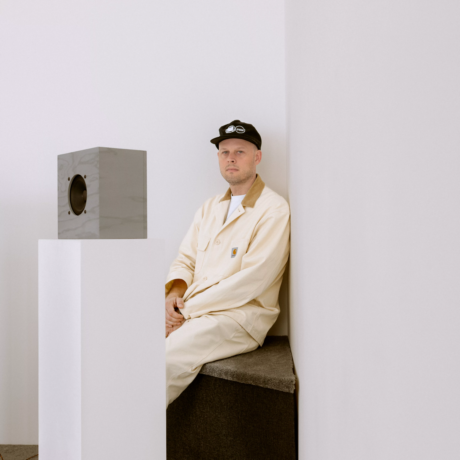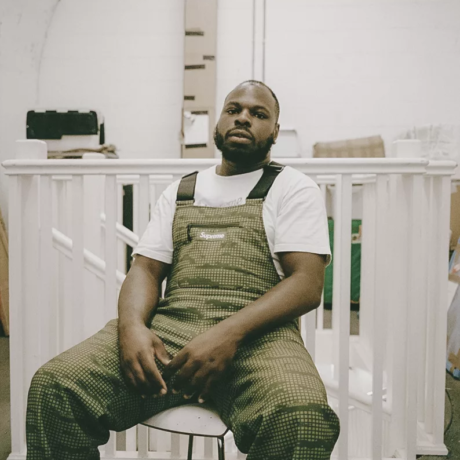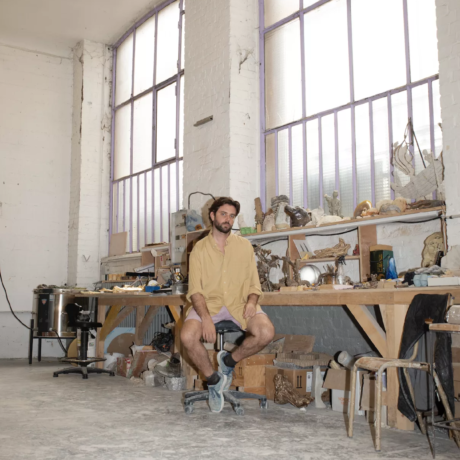New Mexican Nicholas Herrera’s first solo museum show celebrates the artist’s three-decade-plus practice following a near-fatal car crash. Meka Boyle visits his home and studio in El Rito and discovers a Herrera’s dedication to life as he knows it.
To get to Nicholas Herrera’s house in El Rito, an hour north of Santa Fe, you have to abandon the map at some point and rely on directions spoken over the phone: pass a forest service station, a white general store, an adobe church, and, alas, a sign: Arte de Nicholas Herrera. The land, his family’s. His home, built by generations before him and framed by animated metal shapes. Inside, his paintings and wood carvings keep record of a world of his own.
When the artist was a preteen, he would carve little boats out of wood and release them into the rivers in the mountains. “I would just let them float down the arroyos and wonder where they’re going to go,” recalls Herrera as he stands outside his adobe home, his head haloed by the afternoon sun. The Sangre de Cristo Mountains glow fire-orange in the background, a palette of the forest, sage, and rust-coloured rocks. Within the landscape, Herrera’s sculptures appear almost readymade; they jut out from his grassy yard and extend like branches.
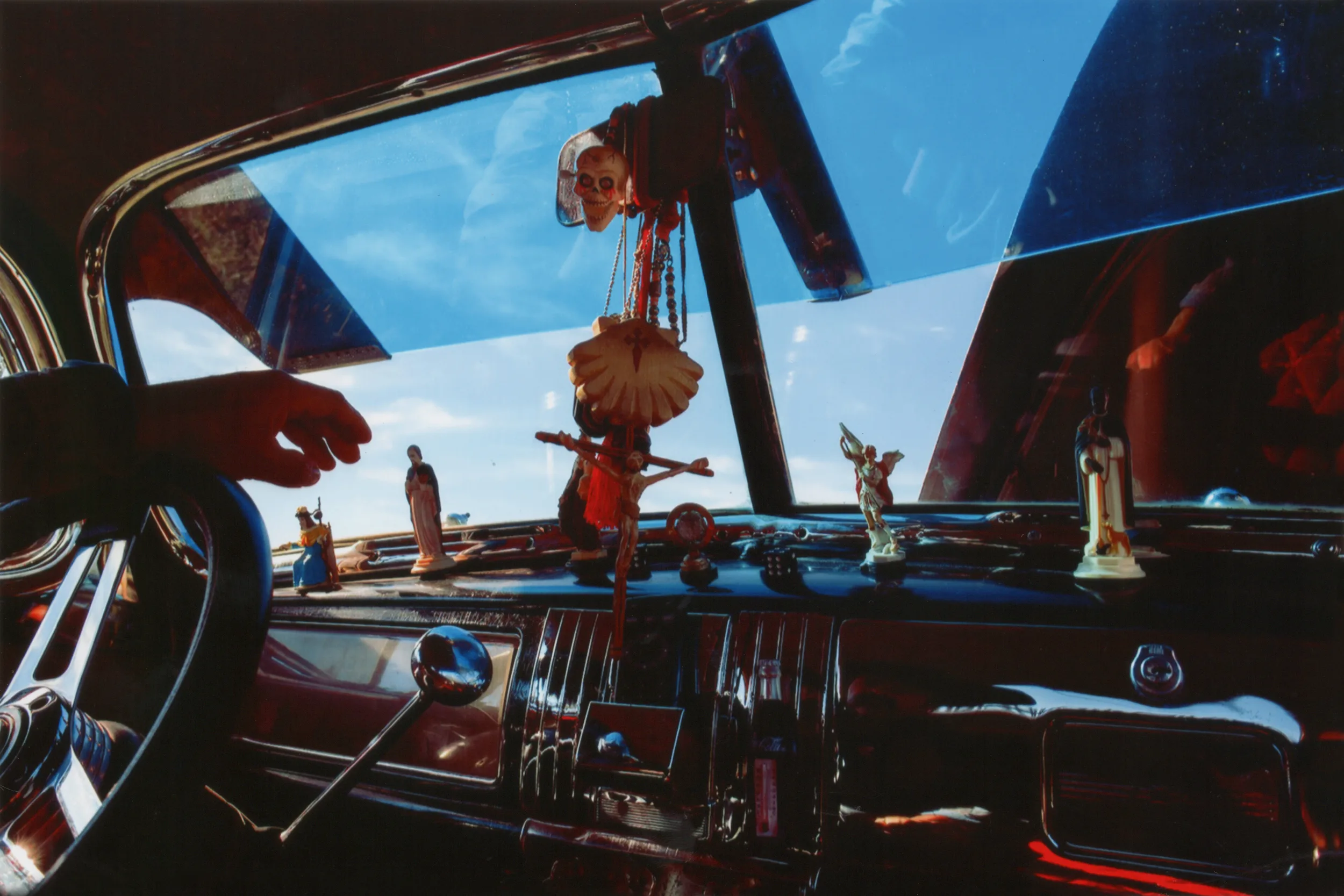
Just an hour north in Taos, at the Harwood Museum of Art, Herrera’s first solo museum exhibition, Nicholas Herrera: El Rito Santero, is currently on view. The show, a homecoming of sorts for the artist, spans his life’s work from childhood to today and will be up through June 1, 2025. The devil’s in the details: pigments culled from the land, symbols inherited and repurposed from the artist’s Catholic upbringing, memories crystalized, and trauma metabolized into saints with coronas fashioned from bullets. Step back, and a portrait of the artist comes into view, anchored by loved ones gone too soon, angels and saints, born-again sinners.
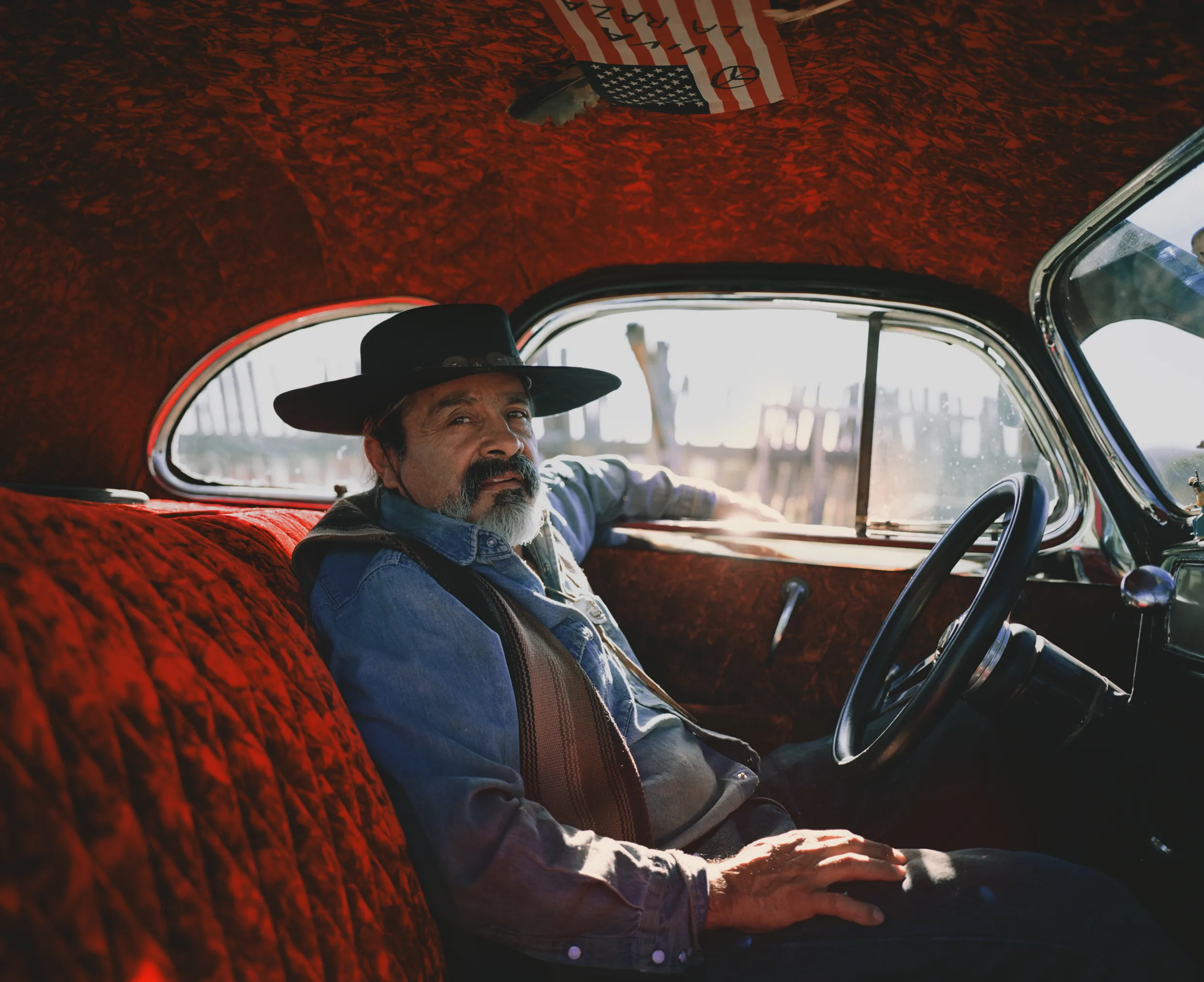
“When I finished [installing the show], I set up a little chapel in there for my mom and my dad in memory of them and of my brother, too, who passed away,” he says. “They were there in spirit.” As the artist first walked through the museum, taking in his life’s work, he began to get flashbacks. “It makes you think, I survived this.” “What’s this?” I ask. “Too much drinking, the car wreck, the pain. Life is not easy.” He sighs. “But without all the stuff that happened to me, my art wouldn’t be as powerful as it is. You have to go through hell. You have to find your own trip.”
As we make our way through the sculpture garden behind his house, we pass a towering dream catcher, a clothes line draped with garments, a self-portrait, the Nuestra Señora de Guadalupe—all made of old car parts and other metal scraps sourced from walks along the arroyo, visits to junkyards, and gifts from friends. The artist reaches past one such assemblage into a plum tree and emerges with fruit. “What is El Rito like?” I ask him. “We speak with our heart,” he says, adding, “it is a small town, a really traditional, beautiful place, and we’re trying to keep it like that. A lot of these little towns are turning into, you know, Gringoville—people come here because they love it, and then they want to change it,”says Herrera. “It’s weird,” he adds, “Sometimes I go to some of these little towns, and they look at you like, ‘What are you doing here?’ I’ve been here forever.”
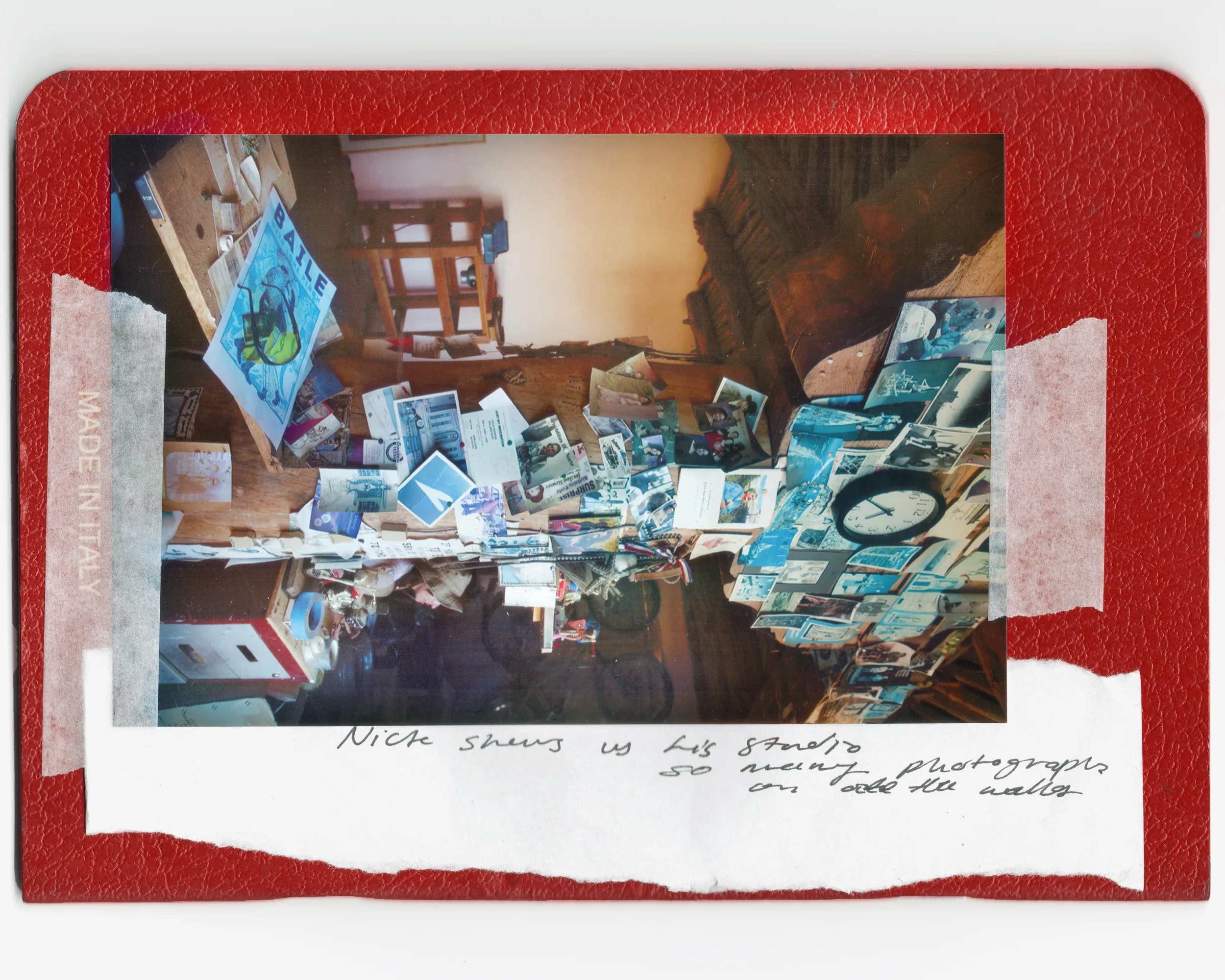
Herrera’s roots run deep in the region: a 15th-generation New Mexican of Spanish, Native American, and Mexican descent, his family first settled in what is now New Mexico in 1598, eventually establishing themselves in El Rito by the 1800s. The land and the culture are in his blood. The adobe house where he lives today was built by his grandfather in the 1890s. “My great grandma used to plaster houses with mud… The men would do the building, and the women would do the plaster with their hands.” After it was damaged by a fire in the ’50s, it became a place for storage until the artist began to rebuild it with his own hands some 30 years ago, adding on new rooms plus a studio and gallery, too, as he went.

“I’ll show you my private chapel,” he tells me as he leads me to an adobe altar where his mother is buried; a large crucifix marks her grave. On the other side, another adobe holds his woodshop and his painting studio. Then, there is his home-gallery, which features his works along with a room for his partner Beth Wald’s striking documentary photography. In the back is a junkyard of old car parts and metal scraps, where a goat roams. A horse brays from a fenced area nearby.
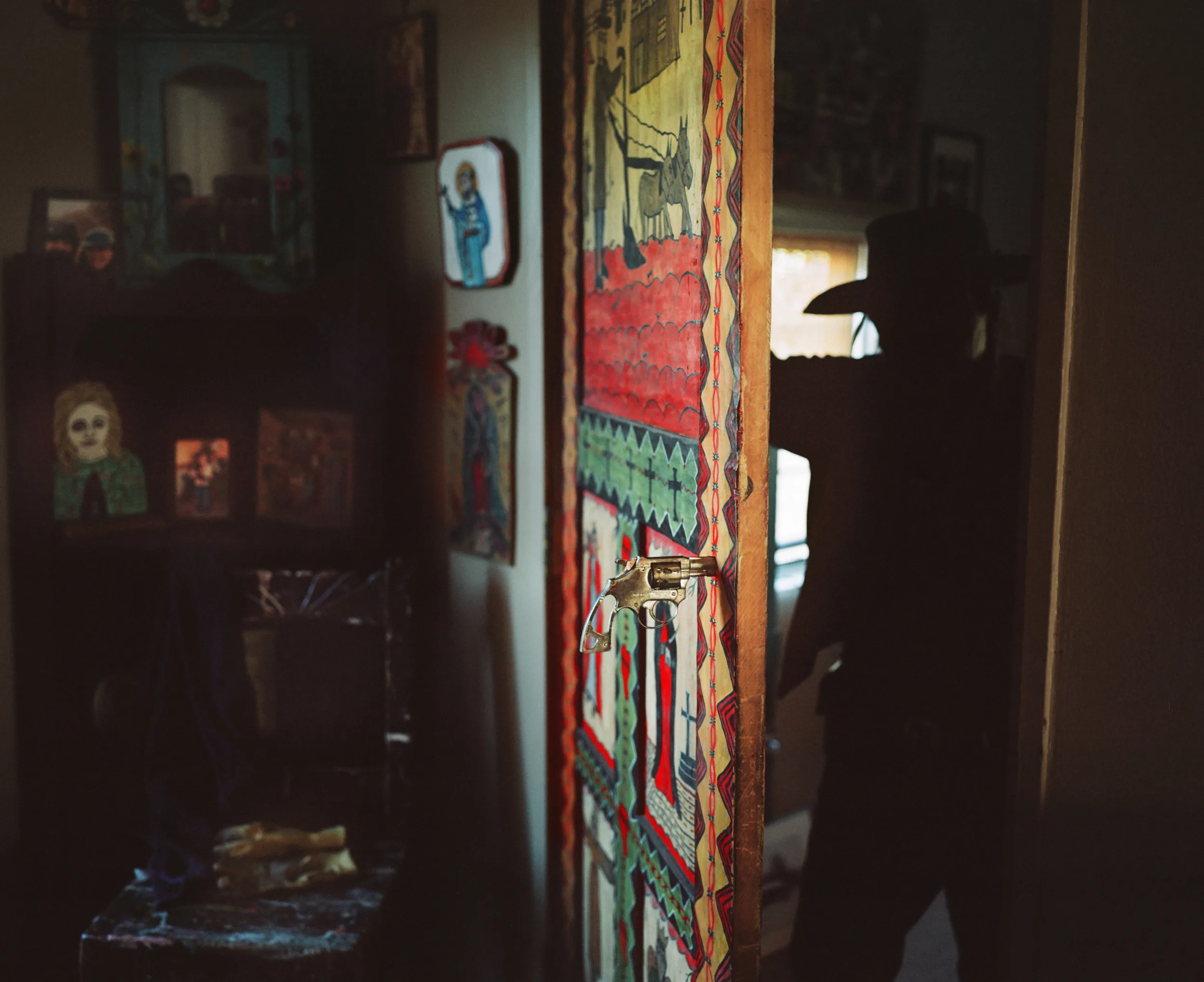
In the centre of it all is Herrera, expressive eyes, thick moustache and goatee, and salt-and-pepper hair in a long braid. Strings from his black wide-brimmed hat are joined under his neck with a miniature skull. Skulls detail his vamped-up 1948 Chevrolet, too. He tells me his great-great-great grandfather’s brother, the artist José Inés Herrera, was known as El Santero de la Muerte, the Angel of Death. Death follows him everywhere, but he isn’t haunted. “Sometimes I carve skeletons, and then I have to cover them because it’s kind of like they’re looking at me, but I don’t want to go there,” he says from inside his woodshop. “I’m not ready yet.”
The artist has lived many lives. As a child, he would carve small animals out of wood. He recalls accompanying his mother, an artist herself, as she cleaned houses—a job that, at times, brought them into the homes of local artists. These artists would pass along art supplies, planting the seeds for Herrera’s future work. One encounter even led to a meeting with Georgia O’Keefe. “To me, she was just another artist,” he remembers.
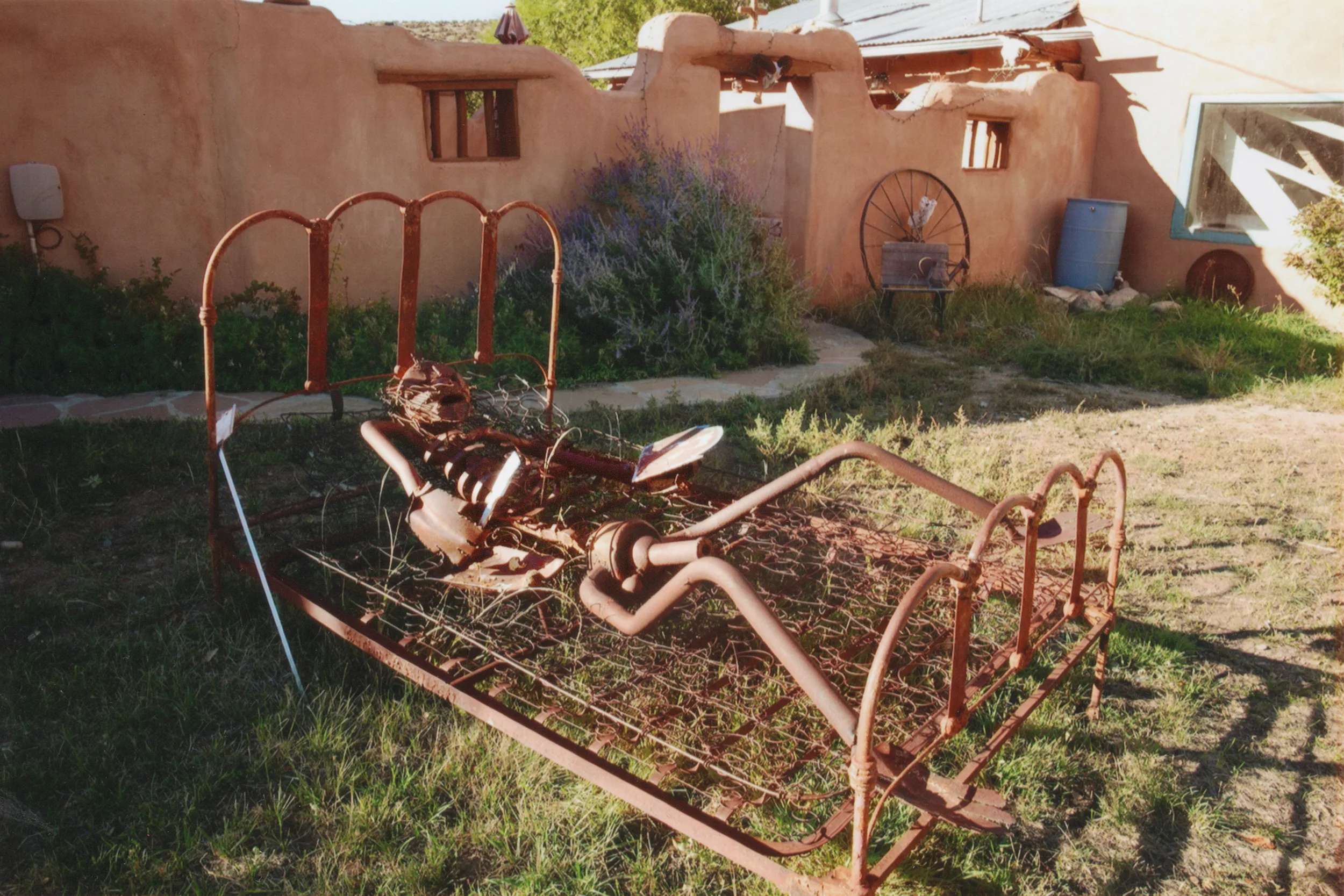
“I was a little weird kid,” he says with a laugh, “maybe I was ahead of my time.” He struggled in school, partly due to his dyslexia, and in high school, he was kicked out. In pursuit of a trade, he went to welding school, then auto body school. His formative years were followed with a similar restlessness, subdued by drugs, alcohol, gun violence, motorcycles and fast cars, and trouble with police. I wasn’t even thinking about doing art for a living,” he says of the time. He was just looking for a skill to get by, something he could do with his hands. But it wasn’t until a brush with death that he discovered his true direction.
As the story goes, in 1990, at 26 years old, Herrera was in a near-fatal head-on collision. The car accident left him in a coma for three weeks. During this time, he had a vision in which he was floating down a river. Muertes (death figures) of his dead relatives called out at the end of a tunnel of light. While he was adrift, police officers waited outside his hospital room to charge him with driving under the influence along with outstanding warrants for traffic violations. He spent around five months in jail in Los Alamos, making sketches of other inmates in what was the start of a new, fruitful chapter. Reborn as El Rito Santero (the Saint Maker of El Rito), Herrera began to channel his traumas into art. Under his deft hand, scrap metal and wood became sacred. Folk art illustrations of saints became charged with something personal and alive.
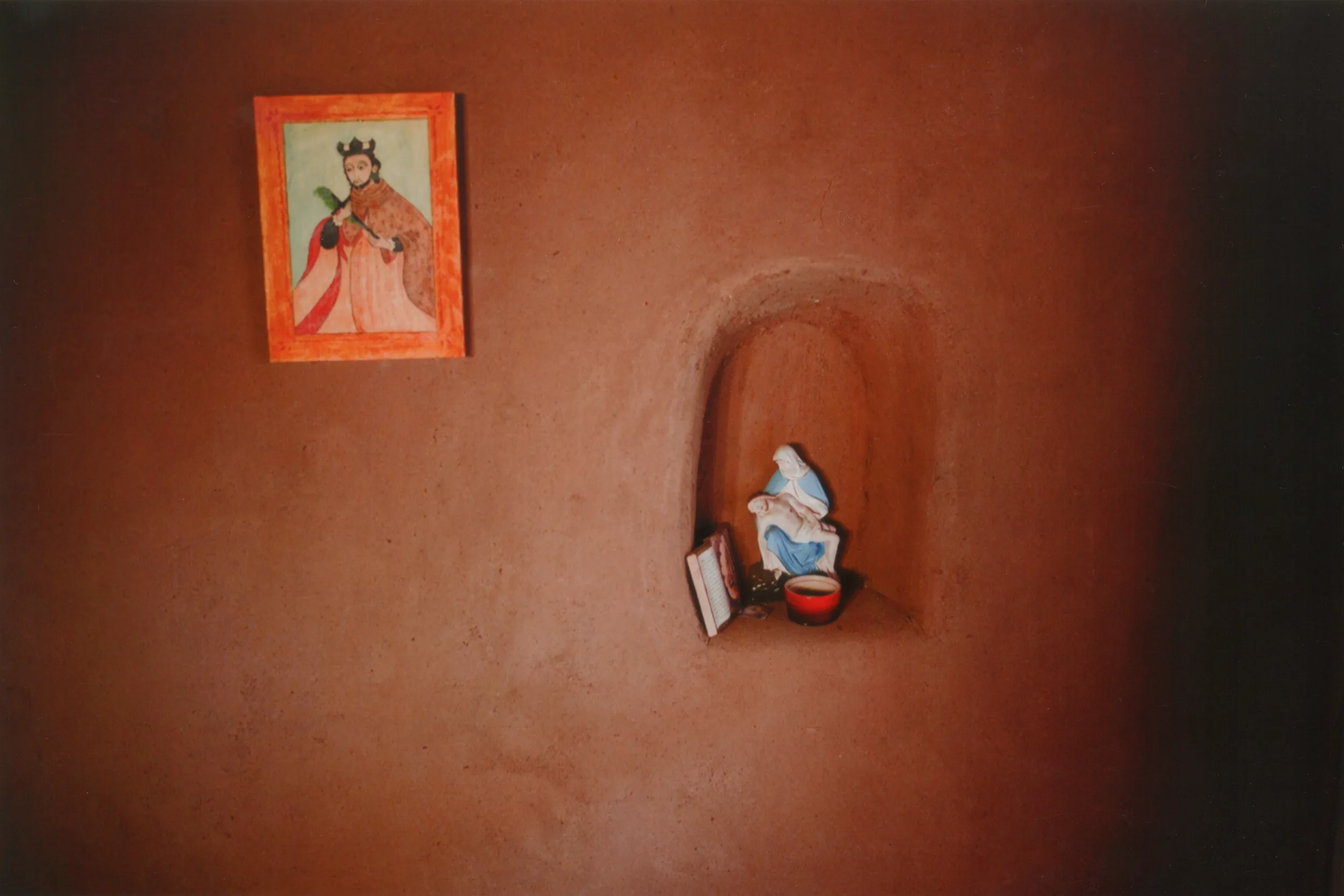
Today, his oeuvre includes devotional paintings, carvings, sculptures, and large-scale mixed media works with Catholic iconography of crucifixes, muertes, and saints like the patron saint of eyesight, Saint Lucy; the patron saint of battered women, Santa Rita da Cascia; San Miguel, the patron saint of warriors (Herrera’s father was in World War II); and San Isidoro, the patron saint of farmers. The latter is painted on a door he made for his daughter.
Yet unlike traditional santeros, Herrera infuses his religious scenes with modern life: lowriders, farm life, and scenes of nuclear waste from the nearby laboratory in Los Alamos. (“I worked there for 10 years doing construction. They try to contain the waste, but there was a bad fire a few years ago, and the flames were yellow coming out of the ground.”) There is a Trump piece about the border and racism and a memorial to Victor Villapando, a local 16-year-old who was shot and killed by the police in 2014.
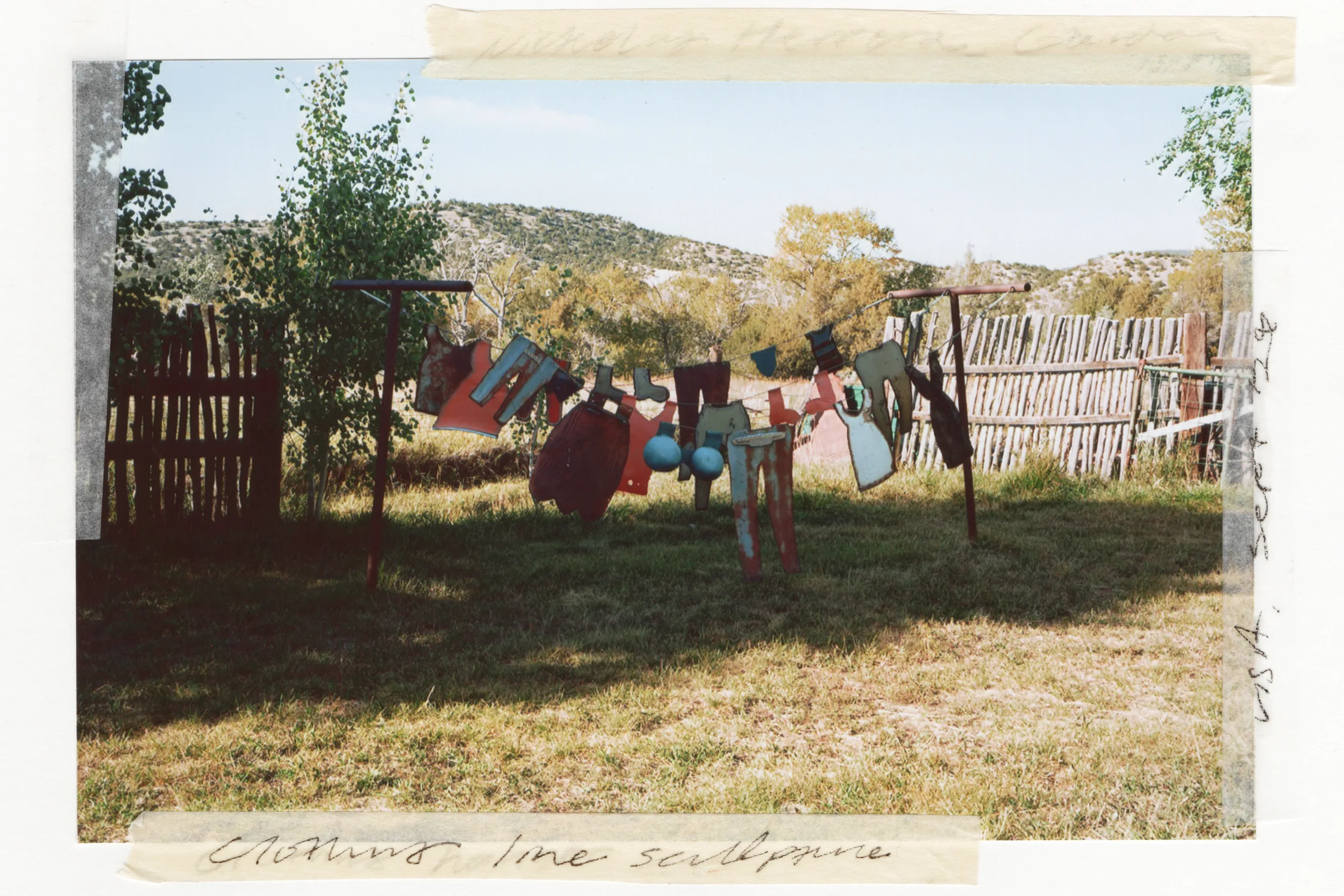
In one memorable work, Jesus rides in the back of a cop car, driving towards a sign that reads: “Forgive them, Lord. They know not what they do, man.” People laughed,” he says of the initial inception of the work, titled Protect and Serve, 1994. “They thought I was crazy. They said it was sacrilegious.” Now, people and institutions are catching on. Jesus in the police patrol is in the Smithsonian’s private collection, and Herrera’s artwork is in over 30 museum collections nationwide.
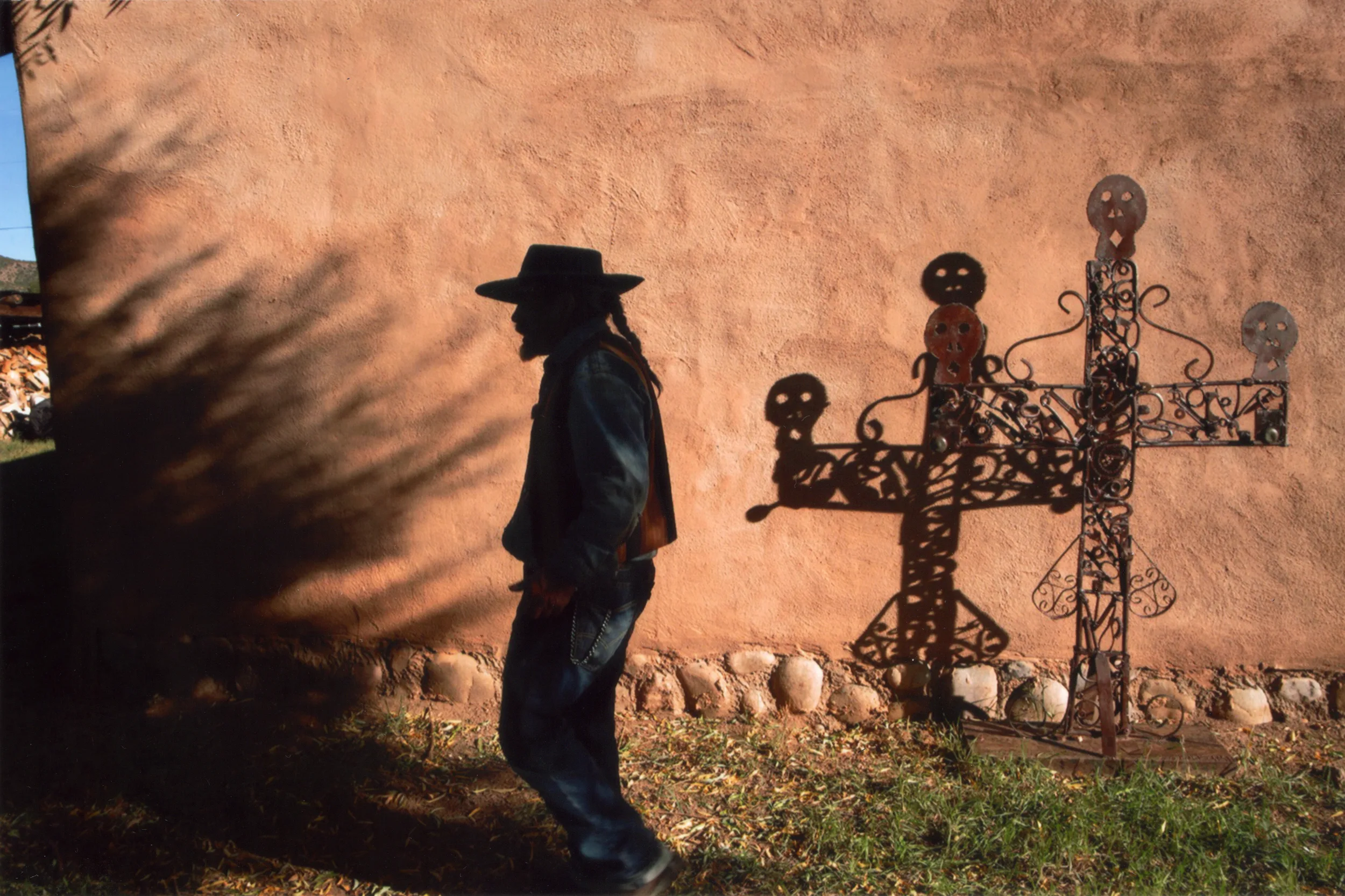
Herrera is grounded in the present moment, but his connection to the tierra is cosmic and ancestral. It is so entwined with everyday life that it would be impossible for him to imagine living anywhere else. “I get a letter every year saying ‘Do you want to sell your land?’,” he says. While many locals have passed their property down from generation to generation, the number is dwindling due in part to high taxes and corporate buyouts. “They find somebody who needs money, and then they take advantage. A lot of people from here who want to come back can’t afford it anymore. It’s so expensive,” he says, adding he had to fight for his own land and enlist lawyers to help him secure it.
In one of his works on view at the Harwood Museum, two realtors appear with a BMW and a briefcase full of money. “La tierra no está a la venta,” he tells me: The land is not for sale. The message reverberates in his work: a dedication and homage to life as he knows it.
Words by Meka Boyle
Nicholas Herrera: El Rito Santero is on view at the Harwood Museum through June 1, 2025.

